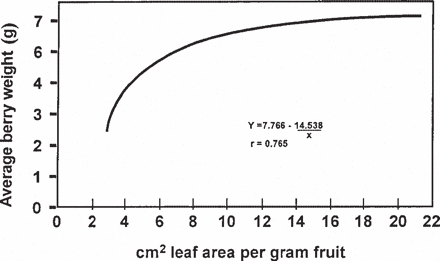October 14, 2020 at 1:42 am | Updated October 14, 2020 at 1:42 am | 3 min read
What is Leaf Area?
It is easy to measure leaves, and they are also the parts of a plant most responsive to their environment. The combination of these two factors makes leaf area measurement extremely useful to scientists and growers. Besides, leaves are one of the main plant organs and are responsible for the productivity of a plant, and on a larger scale, of an ecosystem or a farm. Therefore, an understanding of leaf area and the different methods to measure it is important.
Why is Leaf Area Important?
Leaves are one of the most important organs that plants have. Photosynthesis, the process by which plants produce food using light, carbon dioxide (CO2), and water, takes place in leaves. The structure and makeup of leaves are designed for photosynthesis.
- Light is captured by chloroplasts in leaves.
- Carbon dioxide is taken in through stomata, or openings on the underside of leaves.
Many other important interactions with the environment also happen through leaves.
Subscribe to the CID Bio-Science Weekly article series.
By submitting this form, you are consenting to receive marketing emails from: . You can revoke your consent to receive emails at any time by using the SafeUnsubscribe® link, found at the bottom of every email. Emails are serviced by Constant Contact
Evapotranspiration
Since the internal tissue of plants always has a higher water content than the air, water in the form of water vapor escapes through the stomata when they opens to let in CO2 through a process called transpiration. Plants have to regulate the opening of stomata to achieve a balance between taking in enough CO2 and restricting the loss of water vapor.
Keeping the stomata closed to conserve water, restricts CO2 uptake, resulting in less food production.
If too much water is lost through transpiration, the plant needs to absorb more water from the ground. This happens as a physical reaction to high levels of transpiration that result in negative pressure, which in turn causes the plant to being pulling more water through its roots.
This set of circumstances has significant consequences for plants:
- In drier regions or in higher canopies, where there is abundant sunlight and relatively high temperatures, plants have smaller leaves.
- In wetter areas and lower canopy levels with less light or lower temperatures, plants will have larger leaves.
In crop production, excessive transpiration means more irrigation and fertilizer use, as water is the medium through which the plant moves nutrients internally.
It is therefore easy to see how leaf area affects different plant dynamics in both natural ecosystems and food production. Not surprisingly, leaf area is one of the most important leaf traits studied.
Leaf Plasticity
Some plant parts are responsive and react quickly to changes in their environment. Leaves are considered to be the most plastic plant organ. This trait makes leaves ideal indicators for short-term and long-term changes in environmental stimuli, such as:
- Light
- Water availability
- Temperature
- Nutrient availability
- Soil Type

Figure 1: Average weight of Tokay grapes (g) of at harvest on leaf area per unit crop weight (cm2/g). From Kliewer, W.M. & Dokoozlian N.K. (2005). (Image credits: http://www.ajevonline.org/content/56/2/170)
Disciplines Using Leaf Area Measurements
Leaf area measurement is a reliable parameter in studying the impact of environment on plants in the disciplines of ecology, genetics, and crop management. Ecophysiologists, geneticists, botanists, ecologists, environmental scientists, and agronomists are some of the occupations that use leaf area measurements.
- Ecology: The effect of deforestation or reforestation on plants in the understory can be studied using leaf area measurements. Leaf area measurements by handheld tools are ideal for field measurements in forests and other natural ecosystems.
- Adaptation to the environment: Since leaf size is an adaptation and response to the environment, it can be considered an indicator of the conditions plants grow in: climate, topography, soils, etc. These relationships are interesting for geneticists, ecologists, and agronomists.
- Crop stress: Biological and physical stress such as herbivory, grazing or drought can be tracked through leaf area. Ecophysiologists use leaf area measurements when researching crops or natural ecosystems.
- Crop optimization: Agricultural practices aim to improve growing conditions for plants. Leaf area is one of the aspects measured by agricultural scientists, especially agronomists, to establish the best agricultural practices. Similarly, farmers can check if they are creating an ideal environment for their annual and perennial crops.
Measuring Leaf Area
There are destructive and non-destructive methods of measuring leaf area. Some of the common methods are discussed below:
Direct measurements: This involves taking the length and width of a leaf and using weighted regression equations for each species to get the leaf area. The equation used is
Related Products
Most Popular Articles
- Transpiration in Plants: Its Importance and Applications
- Leaf Area – How & Why Measuring Leaf Area…
- How to Analyze Photosynthesis in Plants: Methods and Tools
- Plant Respiration: Its Importance and Applications
- The Forest Canopy: Structure, Roles & Measurement
- Stomatal Conductance: Functions, Measurement, and…
- Forest & Plant Canopy Analysis – Tools…
- Root Respiration: Importance and Applications
- The Importance of Leaf Area Index (LAI) in…
- Irrigating with Saline or Seawater






